Input interpretation

D-(+)-glucose
Chemical names and formulas
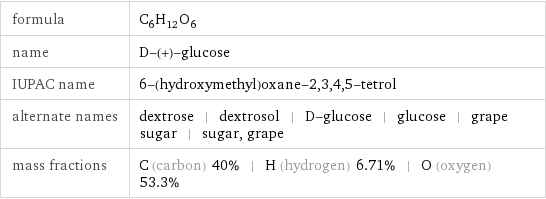
formula | C_6H_12O_6 name | D-(+)-glucose IUPAC name | 6-(hydroxymethyl)oxane-2, 3, 4, 5-tetrol alternate names | dextrose | dextrosol | D-glucose | glucose | grape sugar | sugar, grape mass fractions | C (carbon) 40% | H (hydrogen) 6.71% | O (oxygen) 53.3%
Lewis structure
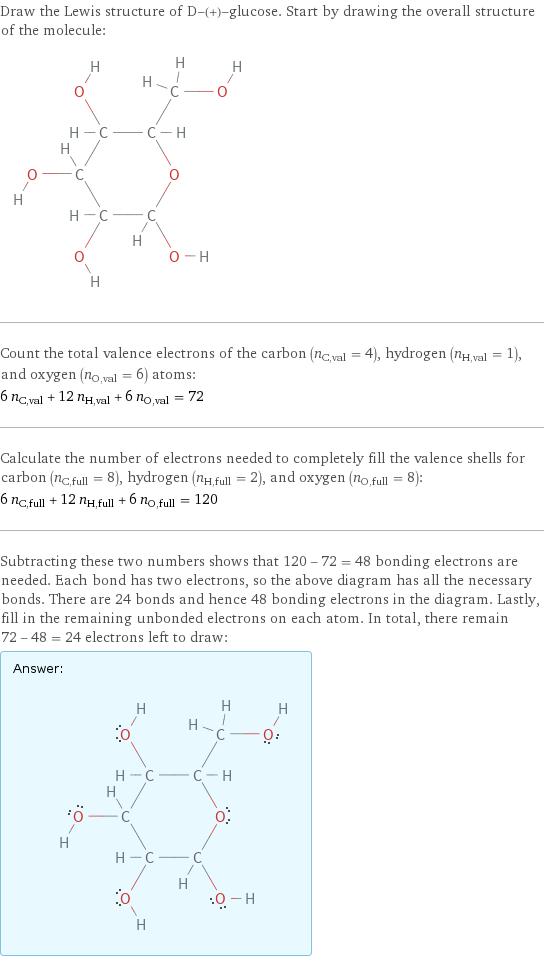
Draw the Lewis structure of D-(+)-glucose. Start by drawing the overall structure of the molecule: Count the total valence electrons of the carbon (n_C, val = 4), hydrogen (n_H, val = 1), and oxygen (n_O, val = 6) atoms: 6 n_C, val + 12 n_H, val + 6 n_O, val = 72 Calculate the number of electrons needed to completely fill the valence shells for carbon (n_C, full = 8), hydrogen (n_H, full = 2), and oxygen (n_O, full = 8): 6 n_C, full + 12 n_H, full + 6 n_O, full = 120 Subtracting these two numbers shows that 120 - 72 = 48 bonding electrons are needed. Each bond has two electrons, so the above diagram has all the necessary bonds. There are 24 bonds and hence 48 bonding electrons in the diagram. Lastly, fill in the remaining unbonded electrons on each atom. In total, there remain 72 - 48 = 24 electrons left to draw: Answer: | |
3D structure
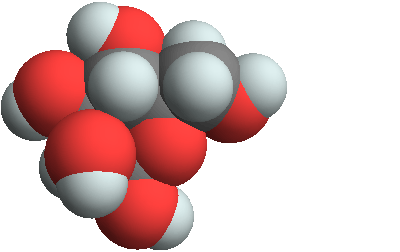
3D structure
Basic properties
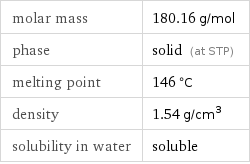
molar mass | 180.16 g/mol phase | solid (at STP) melting point | 146 °C density | 1.54 g/cm^3 solubility in water | soluble
Units

Hydrophobicity and permeability properties
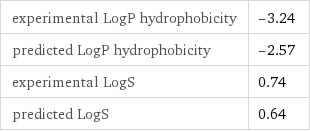
experimental LogP hydrophobicity | -3.24 predicted LogP hydrophobicity | -2.57 experimental LogS | 0.74 predicted LogS | 0.64
Basic drug properties

approval status | experimental | small molecule drug categories | sweetening agent
Solid properties (at STP)

density | 1.54 g/cm^3 refractive index | 1.5101
Units

Chemical identifiers

CAS number | 50-99-7 Beilstein number | 1724615 PubChem CID number | 206 PubChem SID number | 3521 SMILES identifier | C(C1C(C(C(C(O1)O)O)O)O)O InChI identifier | InChI=1/C6H12O6/c7-1-2-3(8)4(9)5(10)6(11)12-2/h2-11H, 1H2 InChI key | WQZGKKKJIJFFOK-UHFFFAOYAC EU number | 200-075-1 RTECS number | LZ6600000 NSC number | 406891
NFPA label

NFPA label
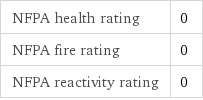
NFPA health rating | 0 NFPA fire rating | 0 NFPA reactivity rating | 0
Safety properties

autoignition point | 500 °C
Toxicity properties

RTECS classes | tumorigen | mutagen | reproductive effector | human data